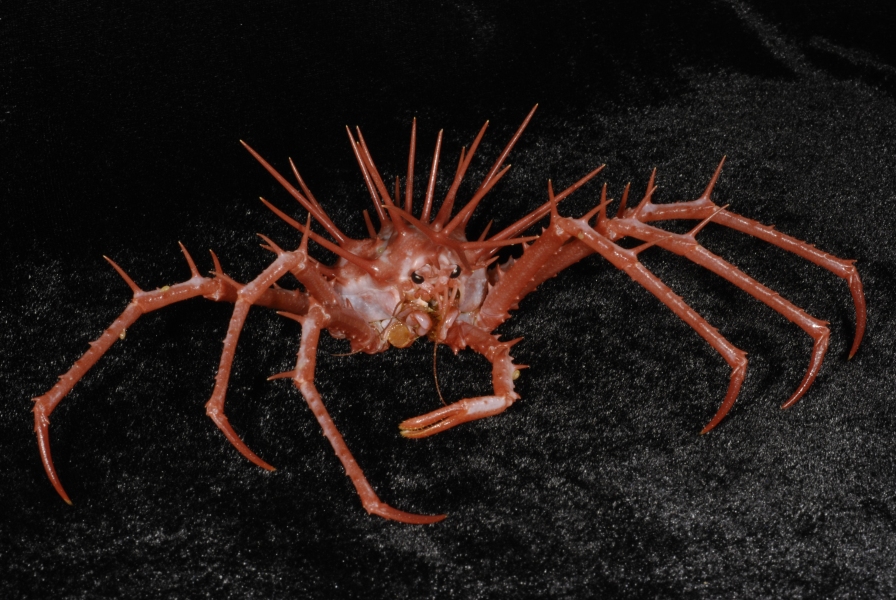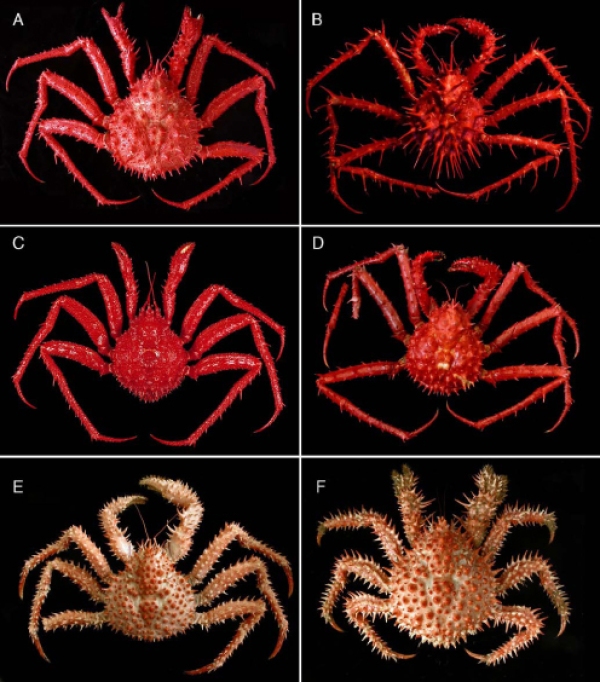Our largest New Zealand king crab is something to behold when it comes on deck. With a leg span of over at least 1.3 m, it reaches a most impressive size and is one of the largest invertebrates we have in our collections. Interestingly, it has only recently been described (Ahyong, 2010, see below) and had until previously been identified as species which we don’t actually have in our waters (species that occur either in the Indian Ocean or around Japan). Since all our records to date are from the New Zealand region (all around the continental shelf at usually between 950-1100m depth, it is aptly named Lithodes aotearoa. Aotearoa being commonly translated from Maori as “land of the long white cloud.”
Aotearoa
Aotearoa is also the Maori name for New Zealand. Here is the popular story about the origons of this name: the Polynesian discoverer of New Zealand Kupe was nearing land after his long voyage, the first sign of land was the peculiar cloud hanging over it. Kupe drew attention to it and said “Surely is a point of land”. His wife, Hine-te-aparangi, called out “He ao! He ao!” (a cloud! a cloud!). Later Kupe decided to call the land after his wife's greeting to it, and the cloud which welcomed them (as presented at the Te Ara Encyclopaedia of New Zealand).
Lithodidae
King crabs belong to the taxonomic family Lithodidae and are among the largest and most conspicuous deepwater crustaceans worldwide. There are just over 120 species known and they are the only real ‘crabs’ (i.e. not shrimps) that live in the Polar Regions (see below). A recent study of New Zealand king crabs have highlighted the region as a hotspot for lithodid diversity. Before 2009, 10 species were believed to occur in New Zealand and Australia but this region has never been studied in detail. A review by Dr. Shane Ahyong (formerly at NIWA, Wellington, now at the Australian Museum in Sydney) published in 2010 more than doubled the number of king crabs to 21, 14 of which only occur in New Zealand. In comparison, the entire Atlantic harbours 30 species, which has been studied for a much longer period of time compared with our part of the world.
See some examples of the brightly coloured lithodids from an example plate from Shane’s publication (figure) and see more images of New Zealand king crabs in the Critter of the Week 25.
Polar crabs
King crabs are the only true crab-like crustaceans in the arctic region. The temperature and the chemistry of the seawater (specifically, a high magnesium content) are thought to limit developmental stages of other crabs from living in the polar regions. King crabs combat these limitation by extended brooding and by producing non-feeding larvae so that they can grow and develop in polar conditions (Thatje & Arntz, 2004).
Reference:
1) Ahyong S. T. (2010) The marine fauna of New Zealand: King crabs of New Zealand, Australia and the Ross Sea (Crustacea: Decapoda: Lithodidae). NIWA Biodiversity Memoir 123.
2) Thatje, S. and W. Arntz. 2004. Antarctic reptant decapods: more than a myth? Polar Biolology 27: 195-201.


